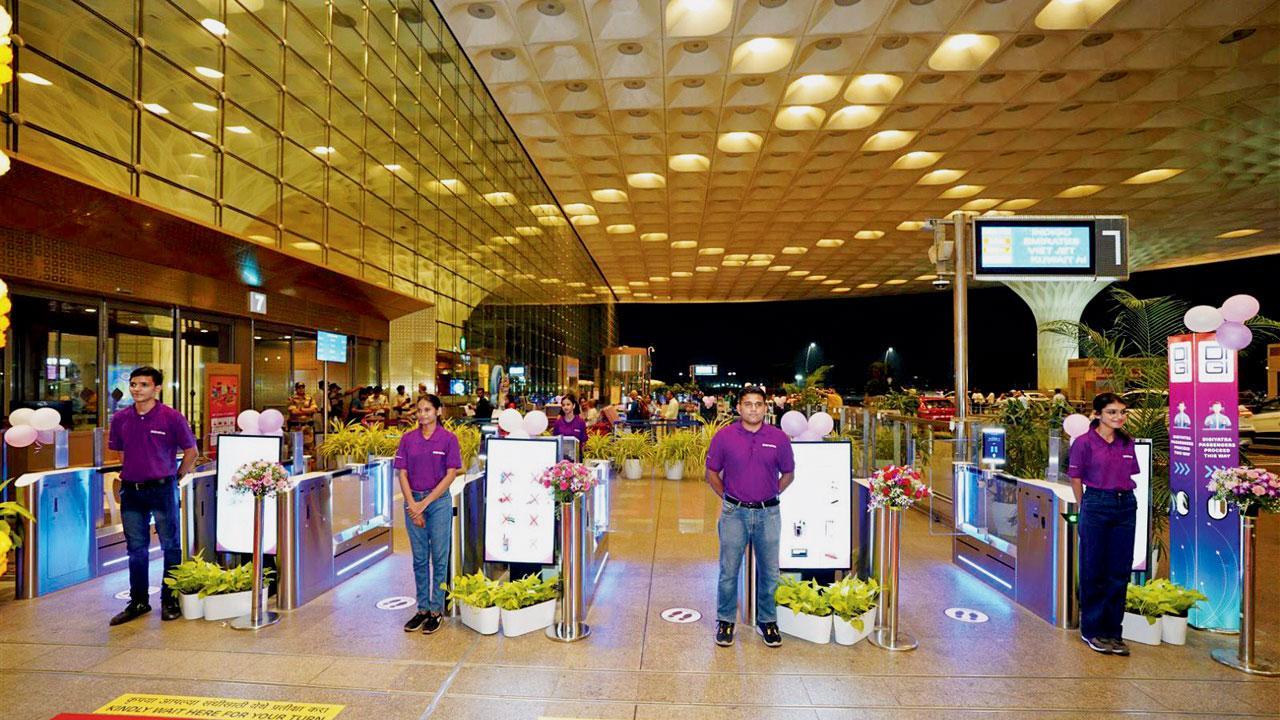Becomes airport with highest number of kerbside e-gates in India

The newly inaugurated e-gates with Digi Buddies standing by to help first-time users
The Chhatrapati Shivaji Maharaj International Airport (CSMIA) has expanded its terminal entry points from 24 to 68, which is the highest number of kerbside e-gates in India. This move which comes after CISF officials in February recommended the step following a major security lapse will facilitate both DigiYatra and non-DigiYatra passengers.
ADVERTISEMENT
e-gates increased
“CSMIA’s digital gateway combines the benefits of technology, process excellence, big data analytics and design thinking to deliver an exemplary passenger experience. Here, the number of terminal entry points has surged from 24 to 68, achieved solely through advanced technology without any need for any major civil works. The digital gateway at T2 now provides for 28 dedicated DigiYatra e-gates alongside 28 dedicated non-DigiYatra e-gates. Additionally, Terminal 1 (T1) features six dedicated DigiYatra e-gates and 6 non-DigiYatra e-gates, further enhancing the airport's overall capacity and passenger experience,” states a media statement from CSMIA.
“In an ongoing development, an additional 118 e-gates are being deployed at the pre-embarkation security check (PESC) area at T2 to further simplify passenger movement. With biometric validation, DigiYatra passengers can breeze through the e-gates without needing to show their ticket, boarding pass, or identity verification. The digital gateway solution leverages a variety of IoT sensors and biometric face pods integrated with the DigiYatra foundation to identify and guide passengers efficiently. This technology will further streamline passenger experience and minimise the processing time for non-DigiYatra passengers,” the statement reveals.
“Now, Mumbai CSMIA has the highest number of e-gates, when compared to other Indian airports. With this expansion, Terminal 2 will be able to process 7,440 passengers per hour, while Terminal 1 will process 2,160 passengers hourly. This is thrice the current processing capacity.”
“At the kerbside, the wait duration has been reduced to less than one minute. This will help the airport to ease congestion, specifically at the entry point. The airport has integrated technology, process excellence, big data analytics, and design thinking to provide an outstanding passenger experience. Without the requirement of major construction work, the additional e-gates were installed through advanced technology,” said a
CSMIA spokesperson
According to the spokesperson, the airport has expanded its digital gateway platform. “This program is a reflection of our commitment to leading the way in innovative technology developments that improve the passenger experience,” he said, adding that the airport operator is committed to making sure that passenger travel is seamless.
Additionally, to assist first-time DigiYatra passengers, ‘Digi Buddies’ have been deployed to guide passengers in using the self-service systems such as DigiYatra, common-use self-service (CUSS), common use passenger processing system (CUPPS), and self bag drop (SBD), informed the spokesperson.
The CISF request
In February, there was a security lapse at Mumbai airport. A passenger without a ticket somehow entered the airport building and passed through multiple checkpoints. He tailgated other passengers to pass through the e-gates and eventually reached the boarding gate, where he was stopped by an airline employee.
“The Ministry of Home Affairs had labelled this incident as a major security lapse. CISF took responsibility for this lapse and the officer responsible was suspended,” said a senior CISF official.
“As part of some suggestions, we requested the airport operator to increase the number of e-gates at the airport and now, this has been implemented. In addition, the company responsible for manufacturing the e-gates has been asked to ensure that the alarm rings when someone tries to get through tailgating.”
 Subscribe today by clicking the link and stay updated with the latest news!" Click here!
Subscribe today by clicking the link and stay updated with the latest news!" Click here!







